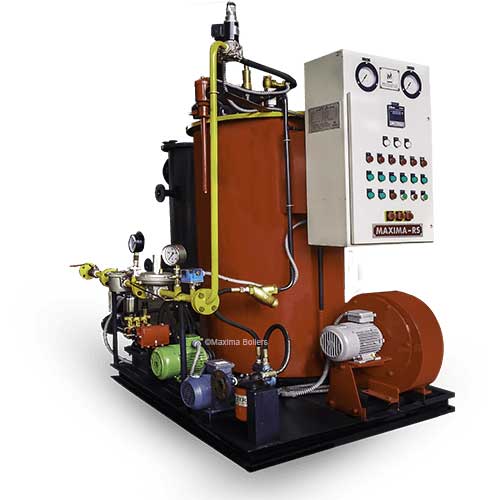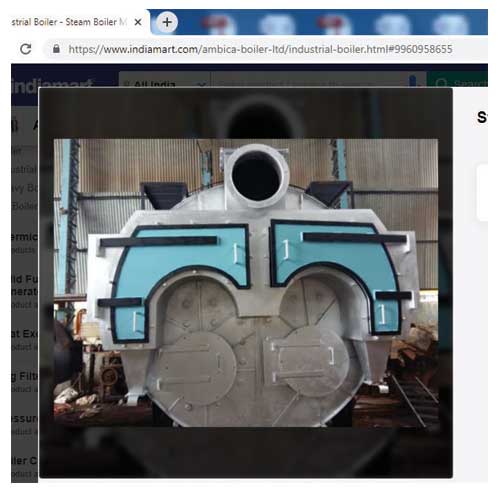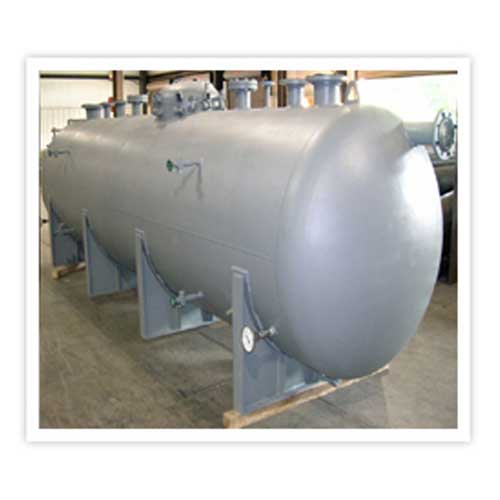Schedule a Call Back
Tips to save energy in furnace operation in rolling mill
 Technical Articles
Technical Articles- May 01,18

In this article, S P Shenoy shows how significant savings in fuel consumption can be achieved in a hot rolling mill by adopting a technique developed by an Indian company. The process involves improving thermal shock cracking resistance of refractory lining, emissivity enhancement, improved corrosion resistance and preventing carbon deposits on the burner blocks.
Hot rolling involves plastic deformation of heated metals and alloys into flat products (slabs, plates) or long products (wire rods, angles, channels, I sections, TMT bars, etc). In this important metal forming operation, refractory and fuel for the reheating furnace (such as furnace oil, pulverised coal or gas) are the major costs. Any process or technique to reduce these costs will automatically improve the profitability of the rolling mill. The following problems are encountered in the case of refractories.
1) Thermal shock cracking
Thermal shock is caused by the exposure of refractory lining to rapid heating and cooling conditions which cause temperature gradients within the refractory bricks. Such gradients, in the case of uneven cooling or heating, may cause cracking. Thermal shock is one of the most important potential failure modes of refractory installations. Thermal shock is unavoidable in furnace operation, however much care may be taken. Thermal shock cracks cause energy leaks through them. This loss may be as high as 33% of the total energy consumption. This is the reason why fuel consumption is observed to be more after a time gap of say, six months, from the date of relining the furnace, for the same level of production. Thermal shock cracks lead to ‘spalling’ and reduced refractory lining life.
2) Thermal shock cracking
Refractory lining has a low emissivity of 0.2 and hence hampers furnace efficiency. Improving this value to 0.5 or more will lead to fuel saving.
3) Corrosive Action
Furnace oil contains sulphur dioxide and vanadium pent oxide. These compounds corrode the refractory lining.
4) Vicious and blasting effect
The flame impinging on the refractory lining has a vicious effect of sand blasting. Combined with the corrosive effect, the flame damages the refractory lining and reduces its life span.
5) Carbon deposit on the burner blocks
This problem is more pronounced when the fuel used is furnace oil. Unburned carbon deposits on the burner blocks, and over a period of time, sufficient carbon build up takes place. Due to this build up, the flame geometry is impaired and heating efficiency is lowered.
A case study
Steel Plant Specialties LLP, a Mumbai based firm, has come out with a unique solution to overcome all the above problems. The entire refractory lining of the reheating furnace is coated with a special coating, ESPON-RCP.
The refractory coating, based on zircon, is in the paste form. Before coating, surface is cleaned with emery paper and all the dust is blown off. Preliminary coating is given by spraying after diluting ESPON-RCP with water.
After two hours of drying, a second coating is applied by brushing. The coating is allowed to dry for 24 hours before firing. A successful case study is presented below:
A hot rolling mill producing 200 tonnes per day of structural steel has achieved significant savings in oil consumption. The reheating furnace is put off at 1800 hours daily.
To achieve the working temperature of 1,150°C, furnace is fired at 0200 hours. At this time, furnace temperature is 300°C to 400°C.
If the refractory lining is coated with ESPON-RCP, furnace can be fired at 0400 hours. At this time, furnace temperature is around 800°C. This higher temperature is due to reduction by 19% in thermal conductivity of the coated refractory lining.
In two hours, 1200 litres of oil are saved daily. In six months, oil saved amounts to 180,000 litres. At Rs 29 per litre, value of saving in six months is Rs 5,220,000. Cost of coating material is Rs 200,000. Net saving in six months is Rs 5,020,000.
Figure 1 and 2 show the condition of the refractory lining and burner blocks before coating and figure 3 and 4 show their condition after coating with ESPON-RC.
Summary
Use of a special refractory coating holds high promises to any rolling mill which is interested in improving refractory lining life and energy saving. This technique is a sure way of saving fuel in furnace operation not only in hot rolling, but also in other industries like fertiliser plants, refineries, petrochemical industries and wherever refractory lining is damaged by the furnace oil.
S P Shenoy is the CEO of Steel Plant Specialities LLP, Mumbai. For details, contact him on Tel: 022 6797 8060, 098207 12387, and email: info@steelplantspecialities.com
Related Stories

Revolutionising HVAC efficiency with renewable energy and low-carbon materials
HVAC systems, crucial for maintaining indoor comfort, have long relied on fossil fuels, raising concerns about environmental impact and energy efficiency. Even so, a transformative moment, aptly cal..
Read more
Boehlerit: Know-how in cutting of tubes
In order to cover the different machining steps, Boehlerit has, over the decades, as the industry’s leading tool supplier, created the market’s most comprehensive product range, now also includi..
Read more
Increasing automation drives servo motors demand
The market for servo motors was significantly influenced by the growing use of automation across a number of industries, including manufacturing, automotive, electronics, and packaging, says Adroit ..
Read moreRelated Products

Coil Type Boilers - VRS Series
Maxima Boilers Private Limited offers a wide range of coil type boilers - VRS Series

Steam Boiler
Ambica Boiler offers a wide range of steam boiler.

Flash Tanks
<p>Tecor Boilers Pvt Ltd offers a wide range of flash tanks.</p><div><br></div> Read more











